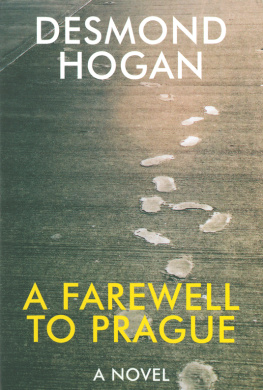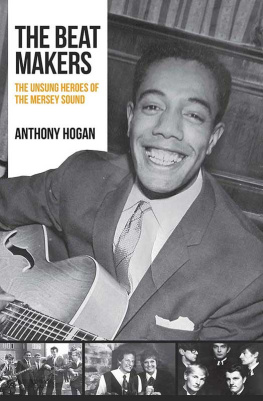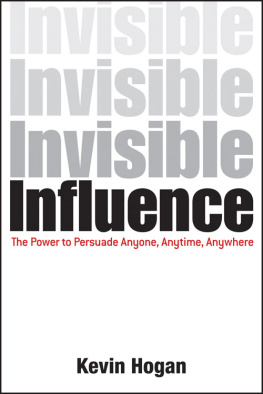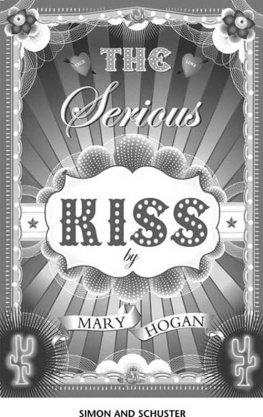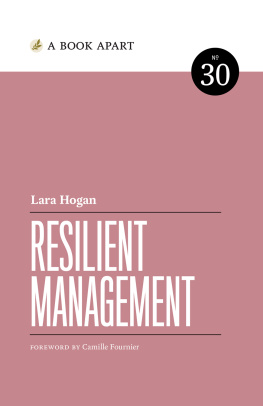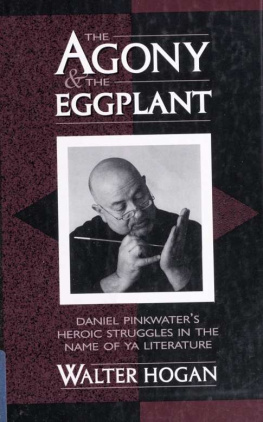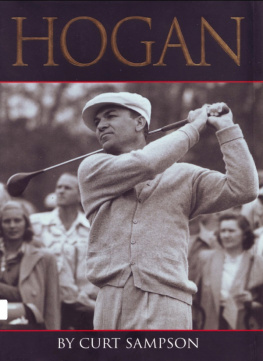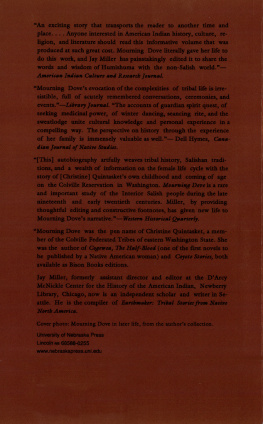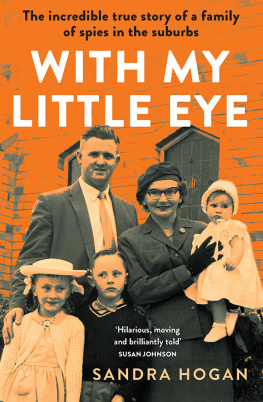Hogan - The house of mourning, and other stories
Here you can read online Hogan - The house of mourning, and other stories full text of the book (entire story) in english for free. Download pdf and epub, get meaning, cover and reviews about this ebook. City: Champaign;London;Dublin, year: 2013, publisher: Columbia University Press;Dalkey Archive Press, genre: Art. Description of the work, (preface) as well as reviews are available. Best literature library LitArk.com created for fans of good reading and offers a wide selection of genres:
Romance novel
Science fiction
Adventure
Detective
Science
History
Home and family
Prose
Art
Politics
Computer
Non-fiction
Religion
Business
Children
Humor
Choose a favorite category and find really read worthwhile books. Enjoy immersion in the world of imagination, feel the emotions of the characters or learn something new for yourself, make an fascinating discovery.
The house of mourning, and other stories: summary, description and annotation
We offer to read an annotation, description, summary or preface (depends on what the author of the book "The house of mourning, and other stories" wrote himself). If you haven't found the necessary information about the book — write in the comments, we will try to find it.
The house of mourning, and other stories — read online for free the complete book (whole text) full work
Below is the text of the book, divided by pages. System saving the place of the last page read, allows you to conveniently read the book "The house of mourning, and other stories" online for free, without having to search again every time where you left off. Put a bookmark, and you can go to the page where you finished reading at any time.
Font size:
Interval:
Bookmark:

SELECTED OTHER WORKS BY DESMOND HOGAN
The Ikon Maker
The Leaves on Grey A Curious Street
A New Shirt
The Edge of the City: A Scrapbook 197691
A Farewell to Prague
THE HOUSE OF MOURNING AND OTHER STORIES
DESMOND HOGAN

DALKEY ARCHIVE PRESS
CHAMPAIGN / LONDON / DUBLIN
Copyright 2013 by Desmond Hogan
First edition, 2013
All rights reserved
The Last Time, The Mourning Thief, Memories of Swinging London, A Marriage in the Country, Ties, Miles, Martyrs, Winter Swimmers, Caravans, Pictures, and Larks Eggs were first collected in Larks Eggs: New and Selected Stories, published by the Lilliput Press, Dublin, 2005.
Shelter, Iowa, Belle, Little Friends, Red Tide, Sweet Majoram, The Hares Purse, The House of Mourning, Essex Skipper, and Old Swords were first collected in Old Swords and Other Stories published by the Lilliput Press, Dublin, 2009.
Wooden Horse originally appeared in The Stinging Fly 2:22, summer 2012.
Library of Congress Cataloging-in-Publication Data
Hogan, Desmond, 1951
[Short stories. Selections]
The house of mourning and other stories / Desmond Hogan. -- First edition.
pages ; cm.
ISBN 978-1-56478-855-9 (pbk. : acid-free paper)
I. Hogan, Desmond, 1951- Last time. II. Title.
PR6058.O346H68 2013
823.914--dc23
2013005546
Partially funded by a grant from the Illinois Arts Council, a state agency
ISBN 978-1-564-78980-8 (e-book)

www.dalkeyarchive.com
Cover: design and composition by Mikhail Iliatov
Printed on permanent/durable acid-free paper
CONTENTS
The last time I saw him was in Ballinasloe station, 1953, his long figure hugged into a coat too big for him. Autumn was imminent; the sky grey, baleful. A few trees had become grey too; God, my heart ached. The tennis court beyond, silent now, the river close, half-shrouded in fog. And there he was, Jamesy, tired, knotted, the doctors son who took me out to the pictures once, courted me in the narrow timber seats as horns played in a melodramatic forties film.
Jamesy had half the look of a mongol, half the look of an autistic child, blond hair parted like waves of water reeds, face salmon-colour, long, the shade and colour of autumnal drought. His father had a big white house on the perimeter of towndoors and windows painted as fresh as crocuses and lawns gloomy and yet blanched with perpetually new-mown grass.
In my girlhood I observed Jamesy as I walked with nuns and other orphans by his garden. I was an orphan in the local convent, our play-fields stretching by the river at the back of elegant houses where we watched the nice children of town, bankers children, doctors children, playing. Maria Mulcahy was my name. My mother, I was told in later years, was a Jean Harlow-type prostitute from the local terraces. 1, however, had hair of red which I admired in the mirror in the empty, virginal-smelling bathroom of the convent hall where we sat with children of doctors and bankers who had to pay three pence into the convent film show to watch people like Joan Crawford marry in bliss.
Jamesy was my first love, a distant love.
In his garden hed be cutting hedges or reading books, a face on him like an interested hedgehog. The books were big and solemn lookinglike himself. Books like War and Peace, I later discovered.
Jamesy was the bright boy though his father wanted him to do dentistry.
He was a problem child, it was well known. When I was seventeen I was sent to a drapers house to be a maid, and there I gathered information about Jamesy. The day he began singing Bye Bye Blackbird in the church, saying afterwards he was singing it about his grandmother whod taken a boat one day, sailed down the river until the boat crashed over a weir and the woman drowned. Another day he was found having run away, sleeping on a red bench by the river where later we wrote our names, sleeping with a pet fox, for foxes were abundant that year.
Jamesy and I met first in the fair green. I was wheeling a child and in a check shirt he was holding a rabbit. The green was spacious, like a desert. Duel in the Sun was showing in town and the feeling between us was one of summer and space, the grass rich and twisted like an old nuns hair.
He smiled crookedly.
I addressed him.
I know you! I was blatant, tough. He laughed.
Youre from the convent.
Im working now!
Have a sweet!
I dont eat them. Im watching my figure!
Hold the child!
I lifted the baby out, rested her in his arms, took out a rug and sat down. Together we watched the day slip, the sun steadying. I talked about the convent and he spoke about War and Peace and an uncle whod died in the Civil War, torn apart by horses, his arms tied to their hooves.
He was buried with the poppies, Jamesy said. And as though to remind us, there were sprays of poppies on the fair green, distant, distrustful.
What age are you?
Seventeen! Do you see my rabbit?
He gave it to me to hold. Dumb-bells, he called it. There was a fall of hair over his forehead and by bold impulse I took it and shook it fast.
There was a smile on his face like a pleased sheep. Ill meet you again, I said as I left, pushing off the pram as though it held billy-cans rather than a baby.
There he was that summer, standing on the bridge by the prom, sitting on a park bench or pawing a jaded copy of Turgenevs Fathers and Sons.
He began lending me books and under the pillow Id read Zolas Nana or a novel by Marie Corelli, or maybe poetry by Tennyson. There was always a moon that summeror a very red sunset. Yet I rarely met him, just saw him. Our relationship was blindly educational, little else. There at the bridge, a central point, beside which both of us paused, at different times, peripherally. There was me, the pram, and he in a shirt that hung like a kings cloak, or on cold daysas such there often werein a jumper which made him look like a polar bear.
I hear youve got a good voice, he told me one day.
Who told you?
I heard.
Well, Ill sing you a song. I sang Somewhere over the Rainbow, which Id learnt at the convent.
Again we were in the green. In the middle of singing the song I realized my brashness and also my years of loneliness, destitution, at the hands of nuns who barked and crowded about the statue of the Infant Jesus of Prague in the convent courtyard like seals on a rock. They hadnt been bad, the nuns. Neither had the other children been so bad. But God, what loneliness thered been. Thered been one particular tree there, open like a complaint, where I spent a lot of time surveying the river and the reeds, waiting for pirates or for some beautiful lady straight out of a Veronica Lake movie to come sailing up the river. I began weeping in the green that day, weeping loudly. There was his face which Ill never forget. Jamesys face changed from blank idiocy, local precociousness, to a sort of wild understanding.
He took my hand.
I leaned against his jumper; it was a fawn colour.
I clumsily clung to the fawn and he took me and I was aware of strands of hair, bleached by sun.
The Protestant church chimed five and I reckoned I should move, pushing the child ahead of me. The face of Jamesy Murphy became more intense that summer, his pink colour changing to brown. He looked like a pirate in one of the convent film shows, tanned, ravaged.
Next pageFont size:
Interval:
Bookmark:
Similar books «The house of mourning, and other stories»
Look at similar books to The house of mourning, and other stories. We have selected literature similar in name and meaning in the hope of providing readers with more options to find new, interesting, not yet read works.
Discussion, reviews of the book The house of mourning, and other stories and just readers' own opinions. Leave your comments, write what you think about the work, its meaning or the main characters. Specify what exactly you liked and what you didn't like, and why you think so.


